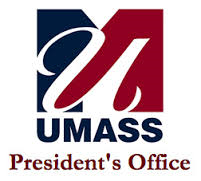How UMass can cut the $11 million
Yesterday, the Statehouse News Service reported that UMass President Marty Meehan announced UMass needs to cut $11 million because the Legislature did not include this sum in their supplemental budget bill. Meehan is upset that his lobbying efforts did not yield state funding for the collective bargaining agreement UMass reached with faculty and staff unions to pay $10.9 million in retroactive wages. Since the wages have already been paid, the university will have to look elsewhere to offset the cost. Meehan, who is “puzzled” and “disappointed,” said it will be difficult to find $11 million to cut from this year’s budget.
Really?
Pioneer recently looked into UMass’ spending and found a lot of fat to cut.
From 2009 to 2014, $84 million was spent on “administration” across the UMass system, a 33% increase over five years. In 2014, UMass Amherst spent $2.5 million on the head basketball and football coaching positions. The newest capital plan for 2015-2019 includes $6.9 billion in construction and renovation projects, a jump of almost $2.5 billion over the 2011-2015 plan.
The increased spending corresponds with increases in student costs. This year, in-state students at UMass saw tuition and fees rise by over 5 percent. Shouldn’t this be enough to offset the cost?
The answer is yes.
According to fall 2014 reports, there are 45,312 in-state students attending UMass’ campuses (not including the medical school). The average increase in tuition and fees at the UMass campuses this year is $871.50 for in-state students. That means UMass raked in an additional $39.5 million from in-state students—more than three times what the collective bargaining agreement costs.
Even if that money cannot, for whatever reason, be used to fill the gap, consider this: UMass generated an unrestricted surplus of over $68 million last year, and has averaged an unrestricted surplus of $64.3 million for the past five years. Surely, $11 million, a small portion of this, could be used to fund the retroactive wages.
As a public university, UMass’ top priority should be to provide Massachusetts students with a high-quality, affordable education. It is in the university’s mission statement, but has not been its practice. If the focus is on keeping costs low for in-state students, UMass needs to reconsider hiking fees that may put college out of reach for some Massachusetts students. If the focus is on providing a high-quality education, then there never should have been a question on when or how the retroactive wages were going to be paid. Faculty salaries should be one of the most important expenditures. Rather than face uncertainty over how to pay educators, UMass should reign in non-academic expenses that are leading to bloated budgets that neither state taxpayers nor students can afford.
Lauren Corvese is a student at Northeastern University working as a Research and Programs Assistant at Pioneer Institute through the Co-op Program. Lauren tweets at: @laurencorvese



